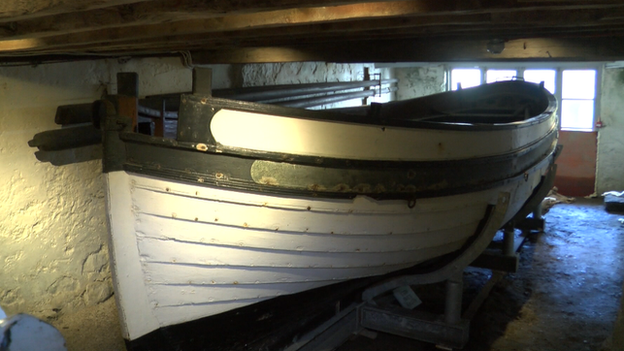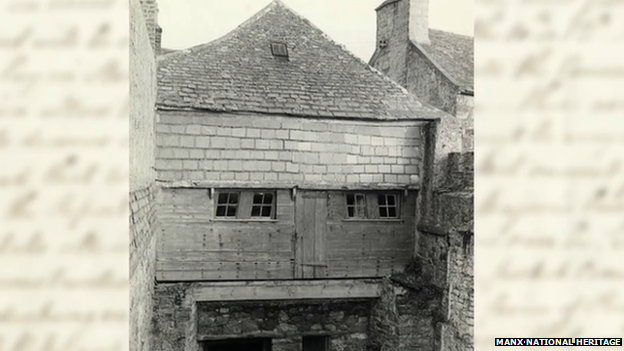‘World’s oldest yacht’ excavated from island cellar

Peggy was built for George Quayle, of Castletown, between 1789 and 1793
An archaeological dig is under way to free what is believed to be the world’s oldest yacht from a cellar in the Isle of Man.
The vessel, Peggy, was built for Castletown politician and bank owner George Quayle between 1789 and 1793.
After Mr Quayle’s death, the boat was locked away for almost 120 years, until it was rediscovered in 1935.
Roy Cottage is a Self Catering Manx holiday cottage, situated on the sea front, in Castletown, the ancient capital of the Isle of Man. Bringing news to the visitor of the Isle of Man.
Edmund Southworth, of Manx National Heritage (MNH), said it was a “Manx treasure which needed rescuing.”
He said: “Internationally, Peggy is quite simply one of the oldest boats to survive”.
It is believed Mr Quayle built his own private dock underneath his Castletown home

MNH is currently embarking on a five-year programme to remove, conserve and study the vessel.
A team of specialist archaeological contractors from England are currently working to excavate the boat from the cellar of Mr Quayle’s former home.
Caroline Raynor, of Oxford Archaeology North, said her team had faced a “number of challenges”.
She said: “To remove the boat we have to move more than 50 tonnes of 19th Century landfill which then fills up with water.”
George Quayle was a politician and bank owner on the Isle of Man in the 1700s
Other finds made by the team include an 18th Century leather pistol holster, boat-building materials and perfume bottles.
Most of the finds are being stored in seawater tanks to preserve them.
Mr Southworth said: “Mr Quayle was a bank owner and an MHK. He was a very wealthy man.
“Internationally, Peggy is certainly one of the world’s oldest surviving boats which has never been restored.
“It is an absolutely fascinating project.”
It is thought the boat was used by Mr Quayle for leisure purposes and to carry important mail to Liverpool.
Once removed, the boat will be dried naturally and restored, a process that could take up to seven years.
Since the project began the team have made a number of significant finds .



